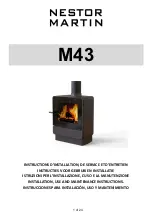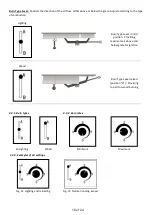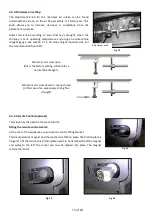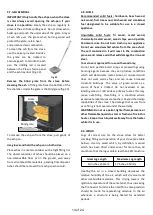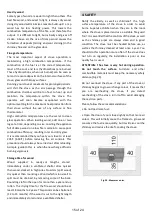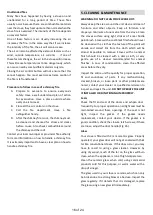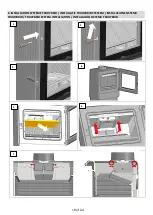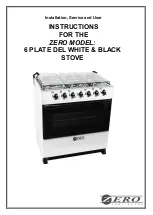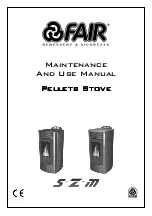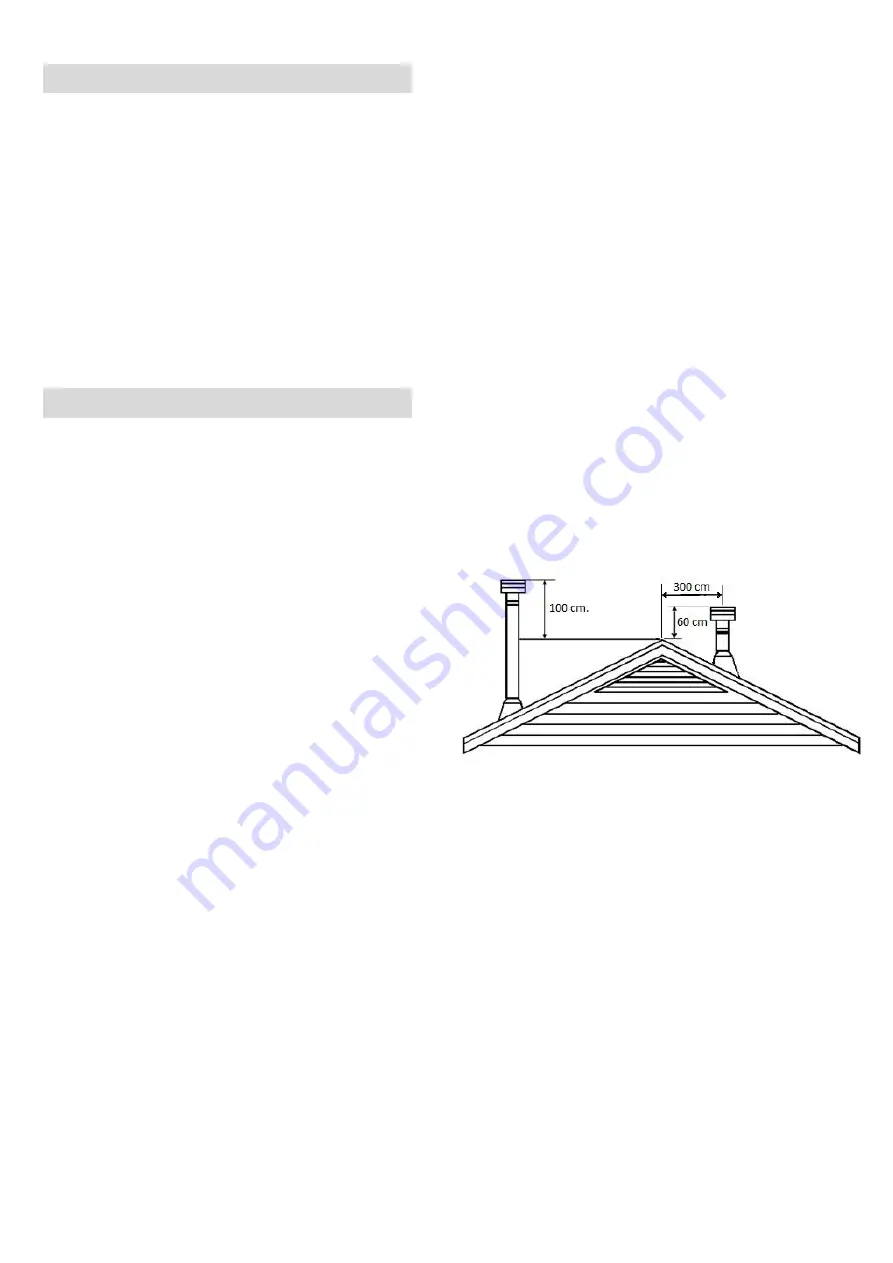
4 of 24
1. INTRODUCTION
IMPORTANT! All local regula�ons, including those
that refer to na�onal or European regula�ons, must be
applied when installing this device.
The way the stove is installed will decisively
affect
safety issues and its correct opera�on.
It is important to install the stove correctly. For the
correct installa�on of the stove and chimney,
we
recommend the installa�on be performed bya
professional.
Please read this en�re manual before you install and
use your new room heater.Failure to follow instruc�ons
may result in property damage or bodily injury.
2. INSTALLATION
If your stove is not properly installed, injury or property
damage may result.
For your safety, follow the
installa�on direc�ons. Contact local building or fire
officials about restric�ons and installa�on requirements
in your area.
Warning: Do not connect this unit to a chimney flue
serving another appliance. The unit must be installed
according to all local codes. Installa�ons other than
those specifically covered herein have not been
confirmed by test and are not covered by the
cer�fica�on
2.1. Chimney.
The chimney is a vital part of your stove installa�on. A
properly built masonry chimney will assure a consistent
dra� under a variety of weather condi�ons. (A smoking
stove is almost always caused by a chimney problem)
All chimneys must be installed either according to the
local building codes in the case of a masonry chimney or
according to the chimney manufacturer’s instruc�ons in
the case of a factory-built metal chimney. See the
chimney
manufacturers’
instruc�ons
for
exact
specifica�ons
Exis�ng chimneys must be inspected before installing
your stove. Consult your local building department for
chimney code requirements. A masonry chimney should
have a code approved liner. This liner must not have
broken or missing pieces. Some non-code masonry
chimneys may be brought up to code by being relined.
(Consult your dealer or qualified chimney sweep.)
Factory-built metal chimneys should also be
inspected, first for creosote deposits (which should be
removed), and then for integrity of the stainless steel
liner. Look for obvious bulges in the lining which may
indicate the need to replace that sec�on (use a bright
flashlight). Also inspect the a�c to see that the
chimney has proper clearance to combus�ble framing
members.
The chimney or vent shall be designed and
manufactured to develop a flow sufficient to
completely remove all flue and vent gases to the
outside atmosphere. The ven�ng system shall sa�sfy
the dra� requirements of the connected appliance in
accordance with the manufactures instruc�ons. The
loca�on, sec�on and height of the chimney condi�on
the dra�.
2.1.1. Chimney Height requirements.
We recommend that the chimney be:
1. at least 100 cm higher than the highest part of the
roof opening through which it passes,
2. and at least 60 cm higher than any part of the roof
within 300cm, measured horizontally.
Fig. 1
2.1.2. Dra� requirements
The appliance is merely one component of a larger
system. The other equally important component is the
chimney. This is necessary for achieving the required
flow for safety removing unwanted combus�on by-
products from the appliance. If the chimney design
does not promote these ends, the system may not
func�on properly.
The recommended dra� requirements for your stove is
no less than –15 pa (-0.048”) and no greater than –25
pa (-0.12”).
OPERATION OF YOUR STOVE WITH A DRAFT GREATER
THAN –30 Pa (-0.14”) CAN POSSIBLY CAUSE DAMAGE
TO THE STOVE AND VOID THE WARRANTY
.
Summary of Contents for M43
Page 2: ...2 of 24 ...
Page 19: ...19 of 24 7 8 9 10 ...
Page 20: ...20 of 24 7 DIMENSIONS ...
Page 22: ...22 of 24 ...
Page 23: ...23 of 24 ...
Page 24: ...24 of 24 SOTO DE LA MARINA CANTABRIA Apdo de correos 208 SANTANDER C07100DC676_1 ED 04 2020 ...

